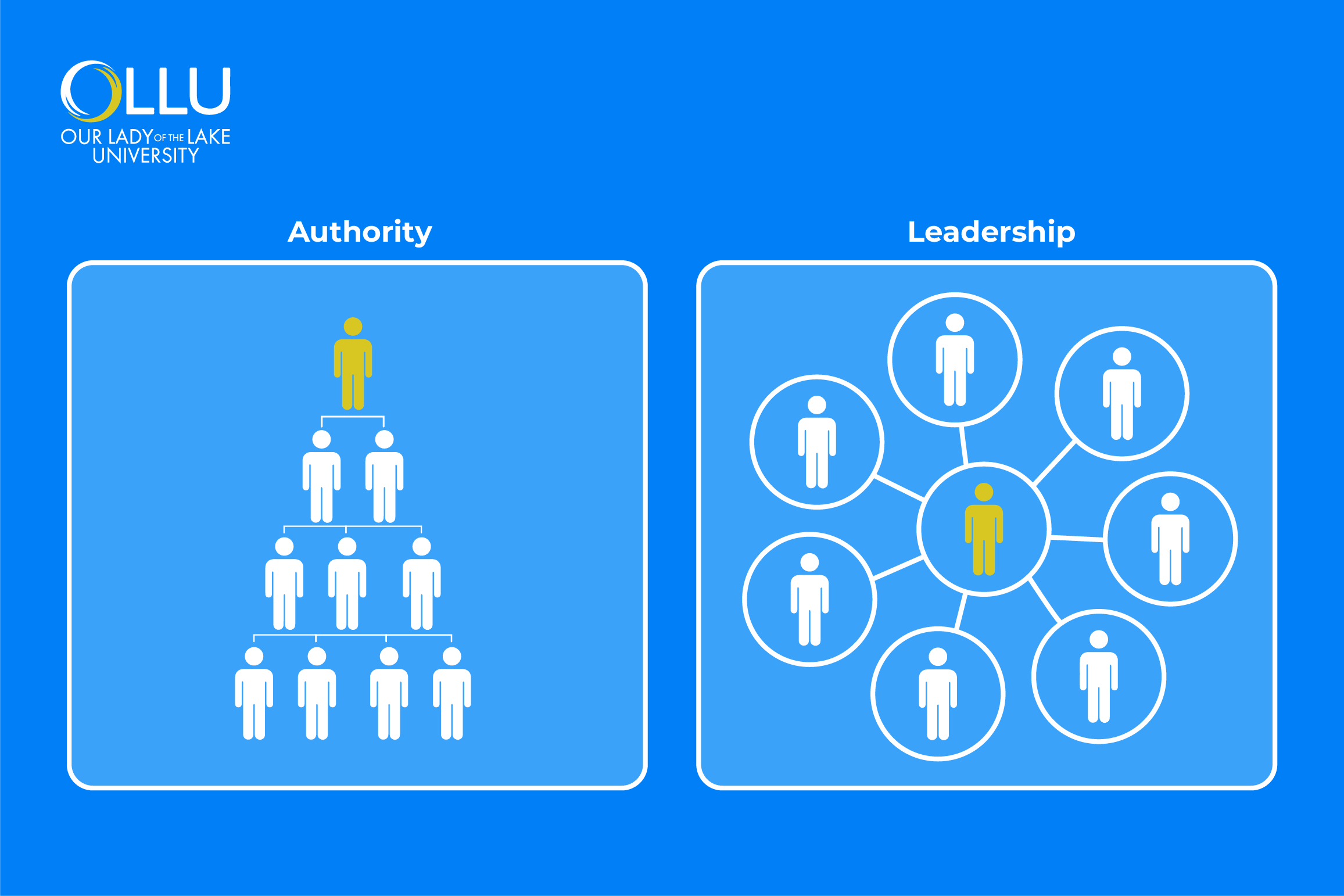Authority and Leadership: A Comparative Analysis
May 30, 2024

In organizations, authority and leadership shape group dynamics. Authority is linked to formal roles and structures, representing sanctioned power within a system. Leadership, surpassing formal positions, relies on inspiring and guiding others toward common goals. This analysis aims to untangle the distinctions between authority and leadership, highlighting their traits and commonalities.
Recognizing these differences is crucial for practical insights to navigate challenges effectively. This understanding goes beyond academia, holding pragmatic significance for cultivating collaborative environments, informed decision-making, and sustainable organizational development.
Understanding Authority and Leadership
Understanding authority and leadership is essential for navigating the complex terrain of organizational dynamics.
Authority, deeply rooted in formal roles and organizational structures, represents an individual's sanctioned power within a system. It is often associated with making decisions, enforcing rules, and allocating resources. Conversely, leadership extends beyond formal titles, relying on the capacity to inspire and guide others toward common objectives. Leadership involves fostering a shared vision, motivating team members, and facilitating collaboration.
The core principle of authority lies in its association with formalized control, while leadership is centered on influence and inspiration. In organizational dynamics, authority establishes a framework for order and structure, ensuring the execution of tasks, while leadership cultivates a culture of teamwork, innovation, and adaptability.
Both concepts are integral, as authority provides a framework for operational efficiency, and leadership contributes to developing a positive and dynamic organizational culture. A nuanced understanding of authority and leadership is crucial for individuals and organizations, as it lays the foundation for effective decision-making, cohesive teamwork, and sustained success.
What is authority?
Authority within organizational structures refers to the legitimate power vested in individuals based on their formal positions and roles. It is a cornerstone of hierarchical frameworks, shaping the flow of decision-making, accountability, and responsibility within an organization.
Authority establishes a clear chain of command, outlining who has the mandate to make decisions, enforce rules, and allocate resources. In this context, authority provides a structured mechanism for maintaining order, ensuring tasks are executed efficiently, and fostering a sense of direction within the organization.
Formal positions, such as managerial roles and supervisory responsibilities, confer authority, creating a framework for individuals to carry out their designated duties. Recognizing authority within an organizational context is crucial for establishing a functional and accountable system where tasks align with established goals and objectives.
What is leadership?
In the organizational context, leadership is a dynamic and influential force that extends beyond formal roles, emphasizing the ability to inspire, influence, and guide others toward shared goals. At its core, leadership is about fostering a collective vision and motivating individuals to contribute their best efforts to achieve it.
Influential leaders excel in communication, articulating a clear vision and expectations, and fostering open dialogue within the team. They possess the capacity to inspire trust and confidence, creating an environment where individuals feel empowered to express their ideas and concerns.
Motivation is a crucial aspect of leadership, as successful leaders understand how to tap into the intrinsic motivations of team members, aligning individual goals with overarching organizational objectives. Leadership, therefore, is not solely about authority but revolves around creating a positive and collaborative culture that nurtures innovation, adaptability, and continuous improvement. Essentially, it is the art of mobilizing a collective effort toward shared success.
What Is the Difference Between Authority and Leadership?

The distinction between authority and leadership lies in their origins, manifestations, and impact on organizational dynamics.
Authority is typically derived from formal roles and positions, representing the sanctioned power to make decisions and enforce rules. It establishes a structured framework for operational efficiency and accountability. In contrast, leadership transcends formal titles, relying on influence, inspiration, and the ability to guide others toward common goals.
While authority is often positional, leadership is personal and can emerge at any level of an organization. For instance, a manager may have formal authority, but a team member can exhibit leadership qualities by inspiring colleagues through innovative ideas.
The distinction lies in the source of influence – authority is granted, while leadership is earned. The two concepts are not mutually exclusive; effective management often involves a harmonious blend of both elements. A manager who wields authority wisely can create an environment where leadership flourishes, fostering a collaborative and motivated team that goes beyond mere compliance to actively contribute to organizational success.
Education
In the context of authoritative roles within organizations, educational requirements often serve as a foundational criterion for individuals assuming formal positions. These roles, commonly found in managerial and supervisory positions, often necessitate specific educational backgrounds, such as business administration, management, or related fields. Specialized knowledge acquired through formal education becomes valuable in decision-making processes and strategic planning.
On the other hand, while benefiting from relevant educational backgrounds, leadership positions place a significant emphasis on qualities such as interpersonal skills, emotional intelligence, and adaptability. Leadership development programs, workshops, and hands-on experiences often supplement formal education, providing aspiring leaders with the practical tools to inspire and guide teams effectively.
While education provides a solid foundation, leadership positions often require a combination of formal learning and the cultivation of soft skills that contribute to effective team management and organizational success.
Work environments
The manifestation of authority and leadership varies across different work environments and is shaped significantly by the prevailing organizational culture. In environments characterized by a rigid hierarchical structure, authority is often more overt, with clear lines of command and decision-making emanating from formal roles. This structure can streamline processes but may limit flexibility and creativity.
Conversely, leadership can be observed in diverse ways, regardless of formal positions. In collaborative and innovative work settings, leadership tends to be more decentralized, emerging from individuals who demonstrate initiative, inspire others, and contribute to the collective vision.
The impact of organizational culture on authority and leadership is profound; a culture that values open communication, trust, and adaptability tends to foster effective leadership, allowing individuals at various levels to contribute to decision-making processes. In contrast, a culture that heavily relies on top-down authority may stifle creativity and hinder the development of emerging leaders.
Recognizing the interplay between organizational culture and the exercise of authority and leadership is essential for creating work environments that balance structure with adaptability, empowering individuals to contribute meaningfully to the organization's success.
Salaries
The compensation structures for roles with authority and leadership responsibilities are distinctly tailored, reflecting the unique nature and significance of these positions within organizations. Roles with authority, often associated with managerial or supervisory positions, commonly follow a structured salary scale based on factors such as experience, seniority, and the scope of responsibilities.
Conversely, while potentially encompassing formal authority, leadership roles may have compensation structures influenced by performance metrics, organizational impact, and the ability to drive success. Trends in compensation data suggest that the traditional hierarchy may influence salaries for authoritative roles.
In contrast, leadership positions may see greater variability, with performance-based bonuses or incentives playing a more prominent role. Organizations increasingly recognize the importance of incentivizing leadership qualities, reflecting a shift towards valuing impact, innovation, and strategic vision in addition to positional authority.
Understanding these distinctions is crucial for individuals navigating their career paths and for organizations striving to attract and retain talent capable of both authoritative and leadership roles.
Authority vs. Leadership: Which Role Is Right for You?
Choosing between a career focused on authority or leadership involves carefully considering personal traits, skills, and preferences.
Roles with authority often suit individuals who thrive in structured environments, value clear hierarchies, and excel at enforcing rules and making decisive decisions. A penchant for organizational efficiency, attention to detail, and adherence to established procedures are beneficial in authoritative positions.
On the other hand, leadership roles are well-suited for those who possess strong interpersonal skills, empathy, and the ability to motivate, inspire, and guide others. Effective leaders excel in communication, adaptability, and strategic thinking. Personal preferences for autonomy, innovation, and a collaborative work culture may align more closely with leadership roles.
It's important to recognize that these distinctions are not mutually exclusive; a successful career may involve a blend of both authority and leadership. Ultimately, individuals should assess their strengths, values, and career aspirations to determine which role aligns more closely with their professional goals and personal fulfillment.
Bottom Line
In conclusion, authority and leadership play crucial roles in organizational dynamics. Authority, stemming from formal positions, ensures operational efficiency, while leadership, extending beyond titles, guides teams with influence and inspiration. Recognizing their distinctions and complementary nature is vital for navigating professional complexities. A thoughtful consideration of personal traits helps individuals align roles with their strengths and aspirations.
The interplay of authority and leadership shapes success and organizational effectiveness in diverse contexts. Striking a balance contributes to personal and professional growth, fostering environments that foster innovation and enduring success.
Frequently Asked Questions
What are the 3 tactics to influence without authority?
The three tactics to influence without authority are:
- Building strong relationships: Foster connections and trust with colleagues;
- Demonstrating expertise: Showcase your skills and knowledge;
- Being a problem-solver: Offer valuable solutions to challenges.
Can a leader have authority but no power?
Yes, a leader can have formal authority due to their position but may lack real influence or power if they cannot inspire or guide effectively.
Is authority earned or given?
Authority can be earned through competence, trustworthiness, and leadership skills. It arises from both demonstrated capability and formal designation within roles or positions.